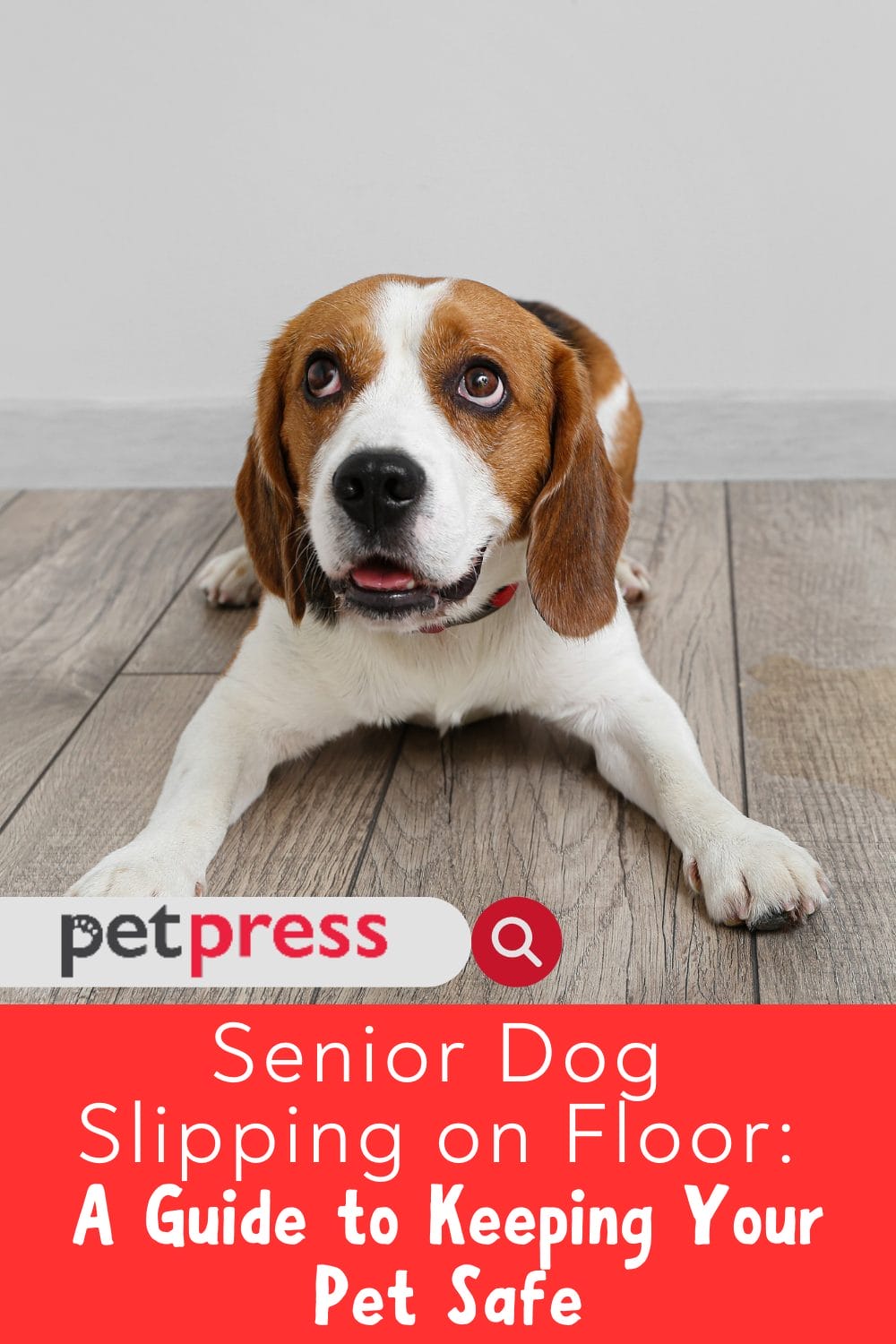
Navigating slippery floors can become an unexpected ‘paws-on-ice’ skating party for your senior dog. Let’s delve into some witty yet inspiring strategies to help your aging furry friend walk confidently and keep ‘senior dog slipping on floor’ incidents to a bare minimum.
In this article, we’re taking a closer look at the surprisingly common issue of ‘ senior dog slipping on the floor.‘ It’s more than just a comical spectacle; it can be a genuine safety concern for our beloved, aging canine companions.
After all, every dog has its day, and we’re here to ensure that for your senior pup, every day is a good day—free from unnecessary slips and slides!
The Troubles of a Senior Dog on Slippery Floors
As our beloved pets age, they may face health issues affecting their balance and coordination. Conditions like arthritis, hip dysplasia, and degenerative joint disease can greatly hinder senior dogs’ mobility, making it difficult for them to move around comfortably.
Moreover, older dogs’ natural decline in muscle mass makes them more susceptible to slipping on slick surfaces. Providing extra care and support to our senior furry friends is important to ensure their safety and well-being.
Understanding Why Senior Dogs Slip on Floors
As dogs age, they experience physiological changes that increase their susceptibility to slips and falls. These changes involve decreased muscle strength, reduced joint flexibility, and balance impairment.
Another significant factor is the weakening of a dog’s foot pads, leading to reduced grip on smooth surfaces. Conditions like arthritis can also cause joint pain and stiffness, further hindering mobility.
Hence, understanding these factors can help us empathize with our senior pets and take proactive steps to prevent ‘senior dog slipping on the floor’ incidents.
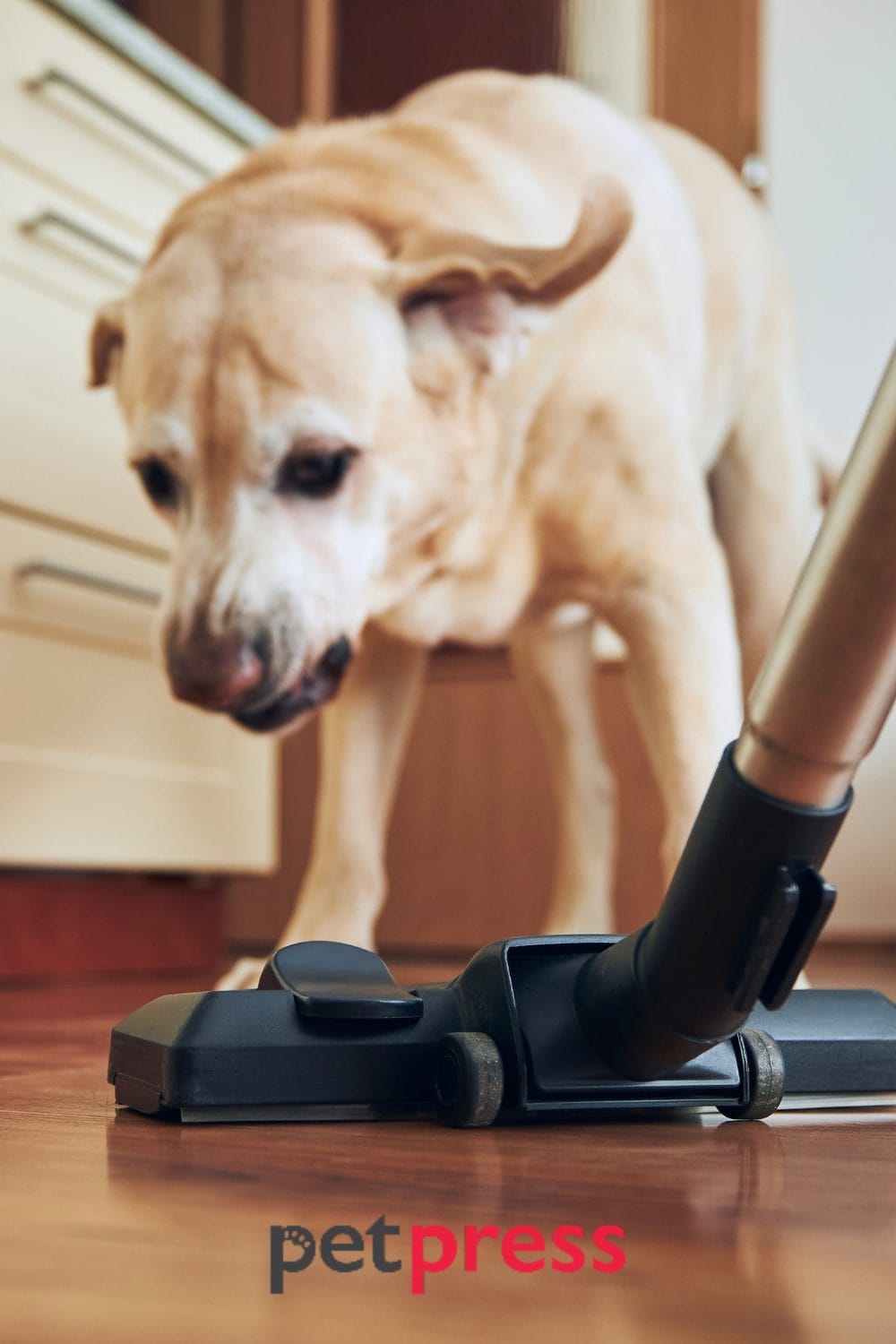
The Science Behind Slipping
The science behind slipping is indeed fascinating. It involves understanding the laws of friction and the forces at play when our senior dogs move across different surfaces.
The friction between the floor and a dog’s paw pads grants them their usual sure-footedness. But as dogs age, their paw pads and overall bodily strength change, reducing the friction generated and leading to slips.
Additionally, smooth surfaces like hardwood floors or tiles offer less friction than carpet or grass, making slips more likely. Understanding these scientific principles allows us to take preventative measures to reduce the chance of our senior dogs slipping.
The Changing Physiology of Aging Dogs
As dogs grow older, their bodies undergo inevitable changes. Muscles may lose their former strength and vitality, and the skeletal system might experience wear and tear.
Age can also decrease sensory perception for our four-legged friends, including a lessened sensitivity in their paw pads. This, combined with the thinning of the fatty layer under their foot pads, may compromise their traction on smooth surfaces, raising the risk of ‘senior dog slipping on floor’ incidents.
So, as our canine pals head into their golden years, understanding these physical changes becomes critical in ensuring their continued safety and comfort.
Why Do Floors Become Slippery for Dogs?
While humans may see a shiny, smooth surface as aesthetically pleasing, our furry friends might have a different opinion. Smooth surfaces offer less traction and friction, making it difficult for dogs to maintain balance and grip.
Factors like wax residue or cleaning products on these surfaces can further reduce friction and cause our senior dogs to slip. To make matters worse, these products can also irritate or burn their sensitive paw pads.
So, while a slippery floor may inconvenience humans, it can pose a real danger for our aging canine companions.
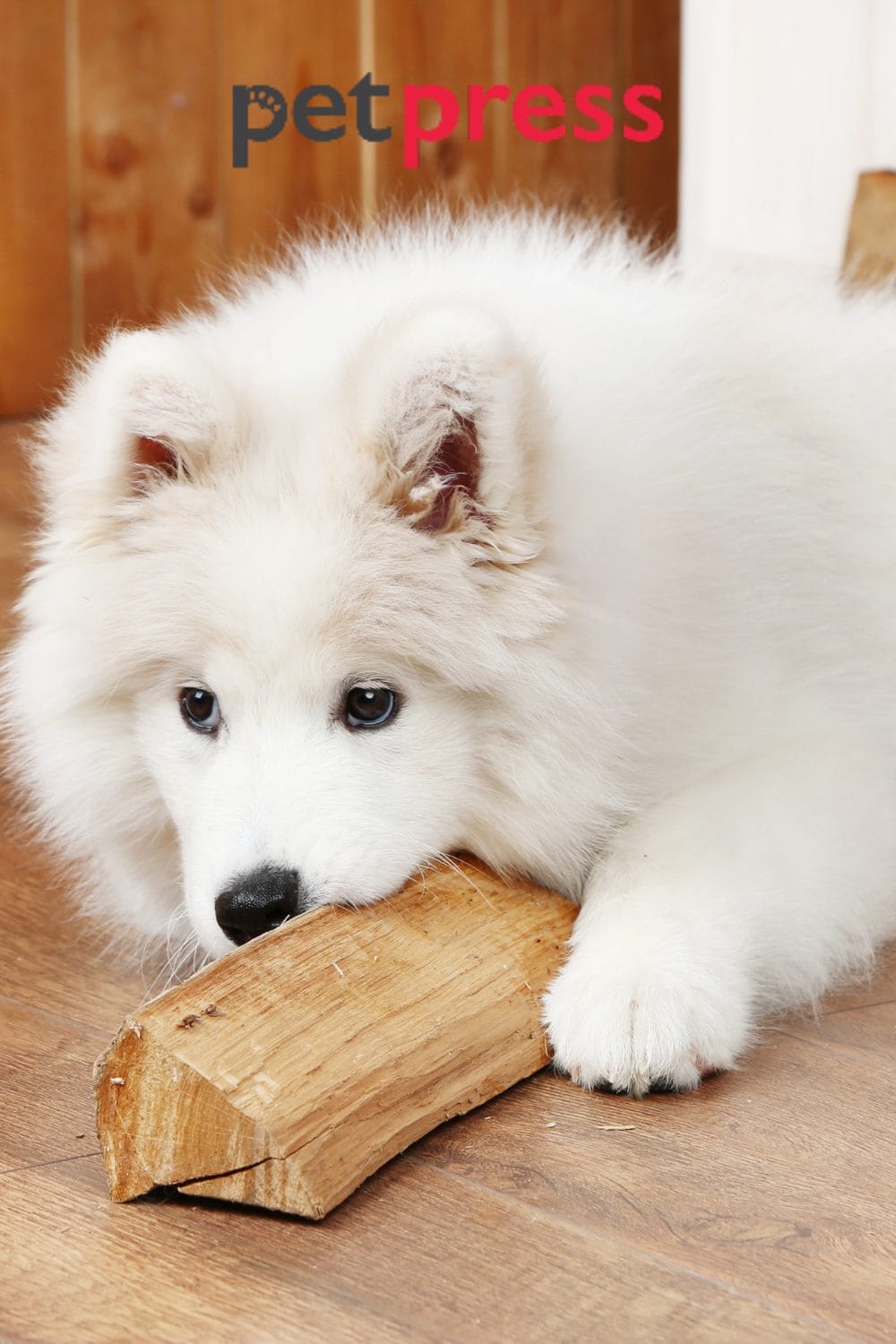
The Risks of Slipping for Dogs
Slipping can be more than just a comical sight; it can also lead to severe consequences for our senior dogs.
Firstly, dogs can suffer physical injuries like sprains, strains, or broken bones when they slip and fall. These injuries can cause pain for our furry companions and result in costly vet visits and extended rest and recovery periods.
A slip and fall can also cause mental distress for our dogs, leading to anxiety and a loss of confidence in their movements. Therefore, it’s important to identify the risks of slipping for our senior dogs and take measures to prevent them from occurring.
Potential Injuries from Slipping
Slipping can be especially dangerous for senior dogs, who may already have mobility issues or weakened bones and muscles. A fall may result in more serious injuries or take longer to heal than for younger dogs.
Sprains, strains, dislocations, and fractures are all possibilities when a dog slips on a smooth surface. The impact of a fall can also cause internal injuries to the organs.
Therefore, it’s essential to be mindful of these potential risks and work towards minimizing them for our aging furry friends.
The Emotional Impact on Senior Dogs
Like humans, dogs can also experience emotional distress after a slip and fall. These incidents can be particularly frightening for senior dogs, as they lose confidence in their movements. This fear may lead to anxiety or even depression, which can affect their overall well-being.
Furthermore, it could also cause changes in behavior like decreased activity levels, reluctance to move around, or avoiding certain areas of the house. As pet owners, we ensure our senior dogs feel safe and secure in their homes.
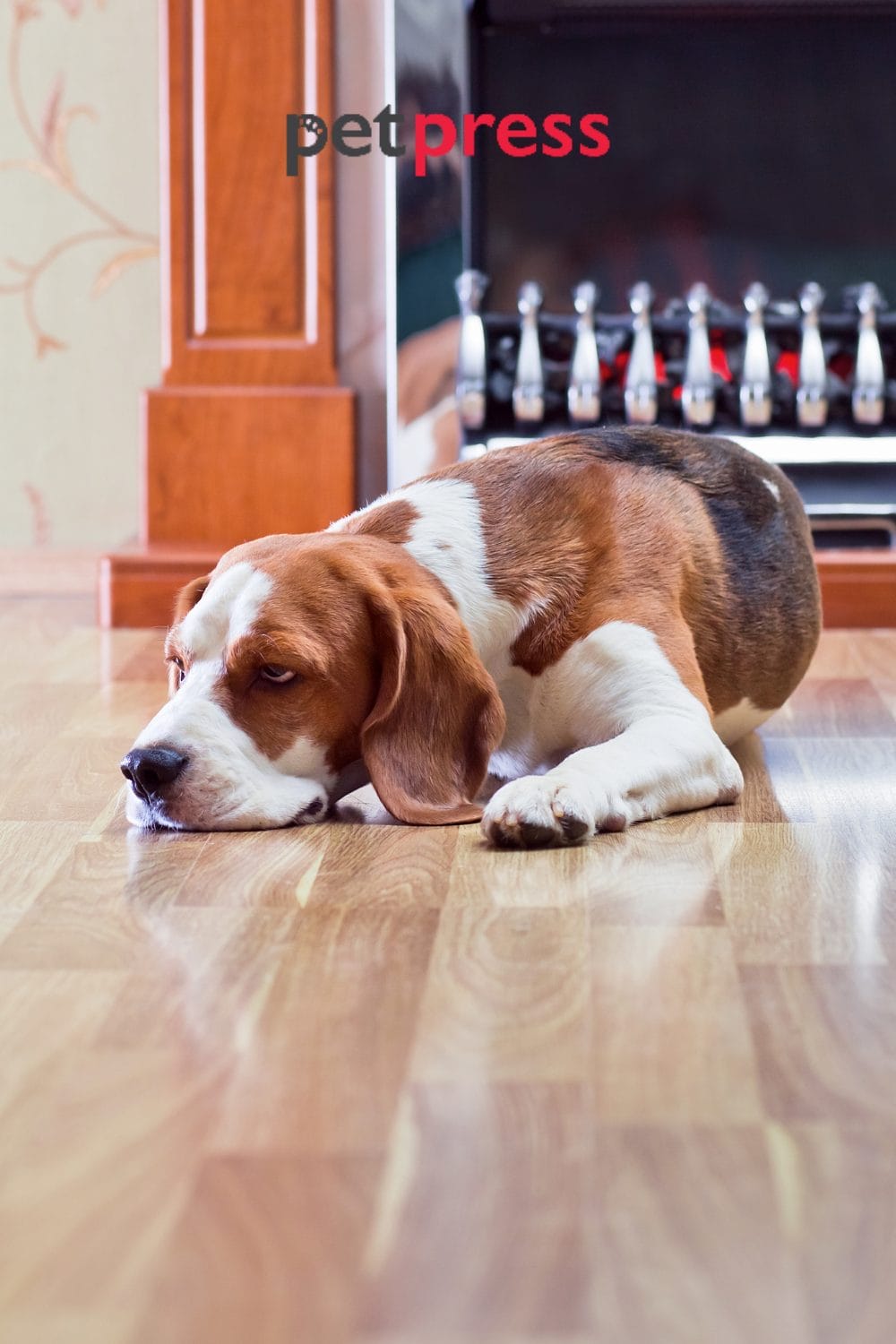
Tips to Prevent Your Senior Dog from Slipping
Taking proactive measures to prevent your senior dog from slipping can go a long way toward ensuring their safety and comfort. Here are some tips to help you make your home a slip-free zone for your aging furry friend:
- Provide adequate traction: Consider adding carpets or non-slip mats on smooth surfaces that your dog frequents, such as hallways or entryways.
- Keep their nails trimmed. Long nails can hinder your dog’s grip on smooth surfaces. Regularly trimming their nails will help them maintain better traction.
- Use paw wax or socks. Paw wax or regular socks with rubber grips can provide additional traction for dogs on slippery floors.
- Avoid harsh cleaning products. When mopping, opt for pet-friendly cleaners that won’t irritate your dog’s paw pads and strip away necessary oils.
- Consider food supplements. Consult your veterinarian about adding glucosamine and chondroitin to your senior dog’s diet. These can help improve joint health, reducing the risk of slips and falls.
- Keeping senior dogs active is crucial for their well-being. Exercise helps maintain muscle strength, flexibility, and balance, preventing slips and falls. A sedentary lifestyle can weaken muscles and joints, increasing the risk of slipping. Incorporate daily walks or light exercises into your senior dog’s routine.
- A well-balanced diet is vital for senior dogs to maintain strength and vitality. Consult your vet for a customized diet plan tailored to their needs. Supplements like omega-3 fatty acids and joint support can enhance overall health.
- Choose the right footwear. Just like humans, dogs can also benefit from wearing the right footwear. For senior dogs who have difficulty walking on smooth surfaces, dog booties or socks with rubber grips can provide additional traction and prevent slips and falls.
Making Your Home Safer for Senior Dogs
These simple adjustments reduce the risk of slipping for your senior dog at home.
- Keep floors clean and dry: Regularly mop or vacuum to remove potential hazards like water spills or debris. Ensure the floors are completely dry before allowing your senior dog to walk on them.
- Add ramps or steps: For dogs with trouble climbing stairs, consider installing ramps or adding steps with a non-slip surface to help them navigate the house.
- Make your senior dog’s living area easily accessible by moving their bed, food, and water bowls to a more convenient location.
- Consider consulting with a professional. If your senior dog has significant mobility issues, consulting with an animal behaviorist or trainer for personalized advice on making your home safer may be helpful.
- Choose the best flooring. Consider materials that offer good traction and comfort. Carpet provides excellent traction and cushioning, while rubber or cork are also suitable options. Bamboo or vinyl are water-resistant and provide better traction. However, it’s best to avoid hardwood or tile surfaces, as they can be slippery for senior dogs.
- Rugs and mats provide traction for senior dogs on smooth surfaces. Consider non-skid rugs with rubber or silicone backing, rubber-backed rugs that are easy to clean, and absorbent rugs for dogs with bladder control issues.
- Use a properly fitted harness. For senior dogs with mobility issues, using a properly fitted harness can help support their weight and provide stability while walking. Consult your veterinarian before purchasing a harness to ensure it fits your dog correctly and doesn’t cause discomfort.
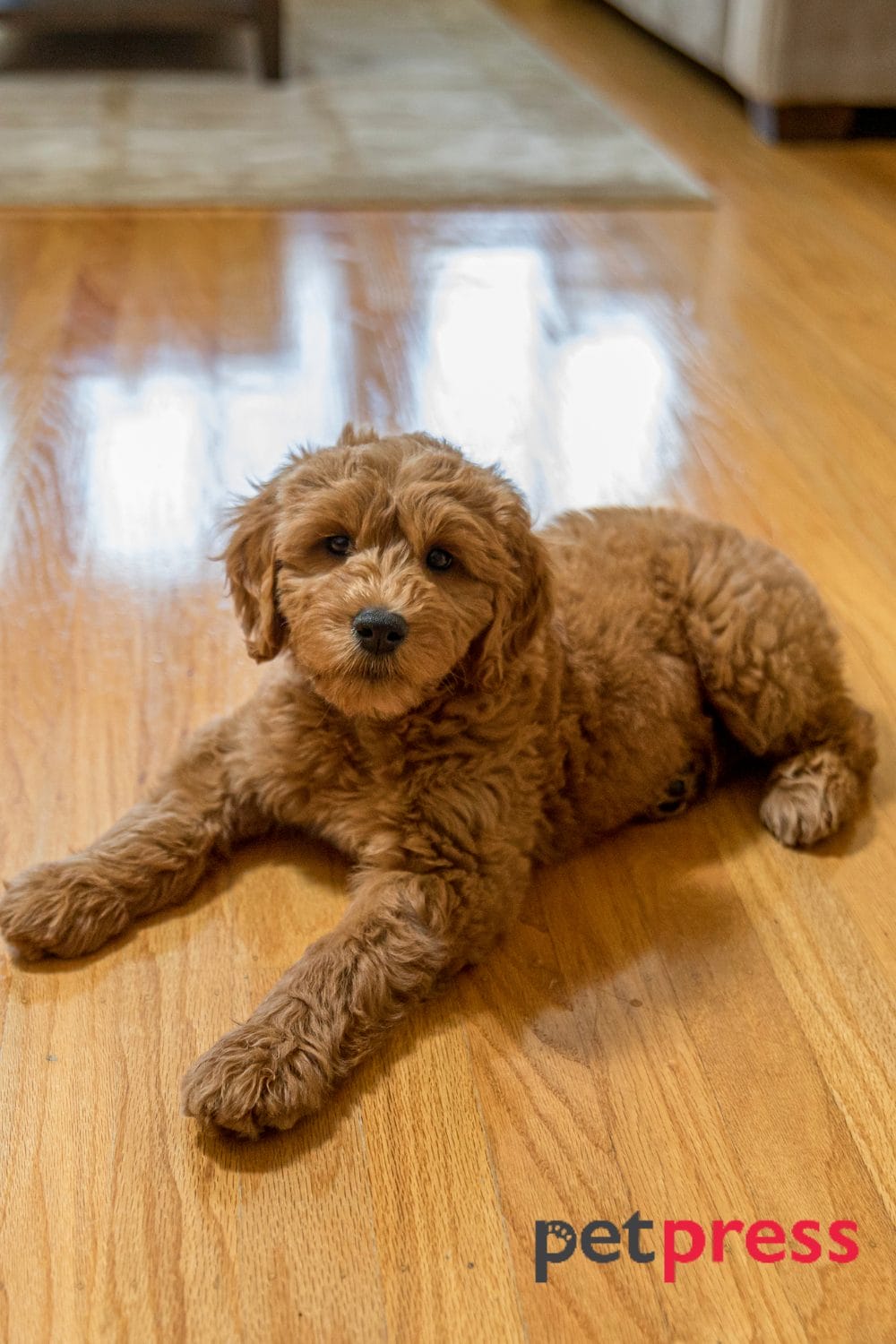
In closing
As pet owners, prioritizing our senior dogs’ safety and comfort is essential. By taking proactive measures, making necessary adjustments in our homes, and providing them with proper care, we can help prevent slips and falls for our aging furry friends.
With extra love and attention, our senior dogs can continue enjoying their golden years without worrying about slippery surfaces. Remember, a safe and supportive environment goes a long way toward keeping our senior dogs happy and healthy.
Senior dogs can live fulfilling and comfortable lives with proper care and attention. Regular exercise, a healthy diet, and a safe living environment are essential to ensuring their overall well-being.
Taking extra precautions and making necessary adjustments for their mobility needs can help prevent slips and falls and protect our senior dogs from potential injuries. So, let’s show our senior dogs some extra love and care and ensure their golden years are truly golden.
If you’ve found this guide helpful in safeguarding your senior dog from slips and falls, please share it to spread the love and knowledge with other pet owners!
Related Post:
50+ St. Bernard Dog Quotes That Inspire Being a Gentle Giant
Unleash the 50+ Heartwarming Dog Quotes That Touch the Heart
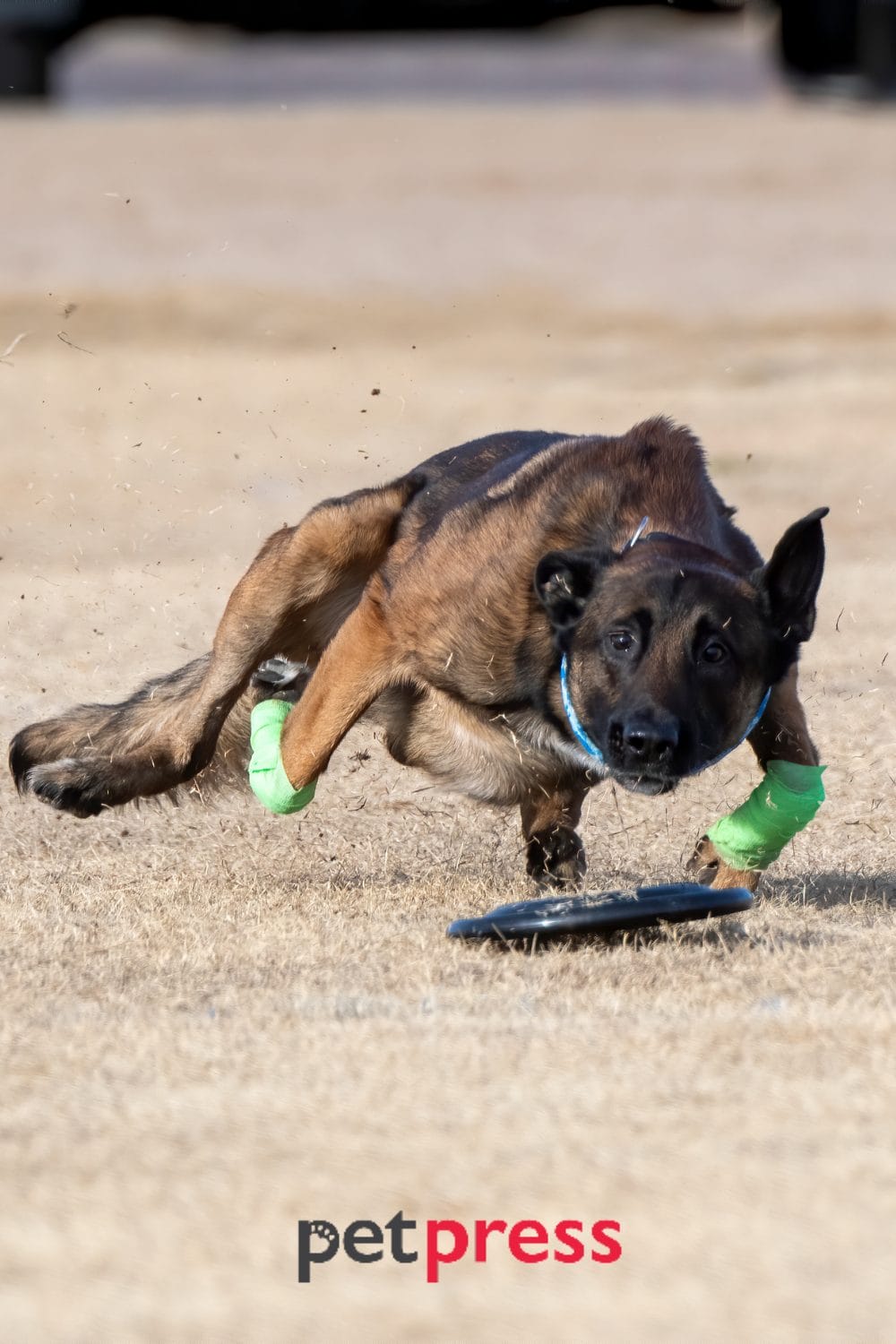
FAQs: Frequently asked questions about senior dogs slipping on floors
As senior dogs age, they may experience challenges navigating slippery floors due to a decline in physical abilities like strength, balance, and coordination. Also, arthritis and hip dysplasia can further impact their stability and footing.
A correctly fitted harness can support and stabilize your senior dog when walking or climbing stairs. It’s particularly beneficial for dogs with mobility issues or joint problems.
Flooring that provides good traction and is comfortable for dogs to walk on is ideal. This can include carpet, rubber, cork, bamboo, or vinyl flooring. It’s recommended to avoid slippery surfaces like hardwood or tile.
Absolutely! For dogs with trouble climbing stairs, ramps, or steps, a non-slip surface can help them navigate the house safely and prevent slips and falls.
If your senior dog is frequently slipping or has significant mobility issues, consulting with a veterinarian, animal behaviorist, or professional trainer can be helpful. They can provide personalized advice for your dog’s specific needs.


GIPHY App Key not set. Please check settings